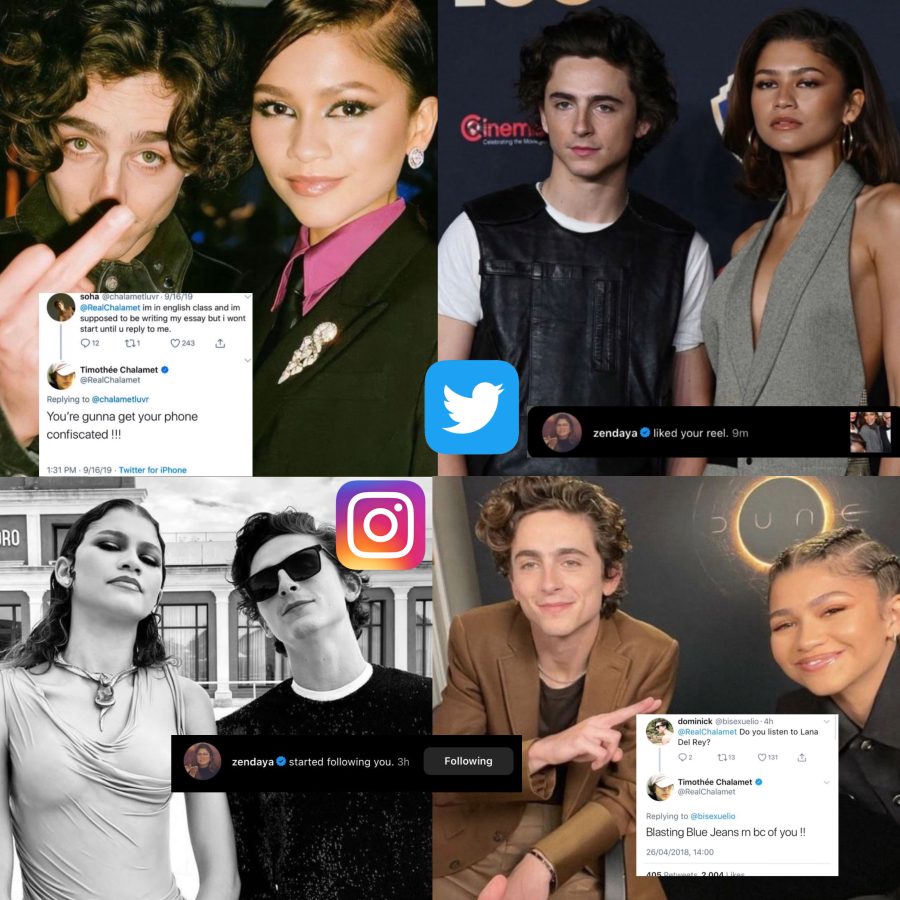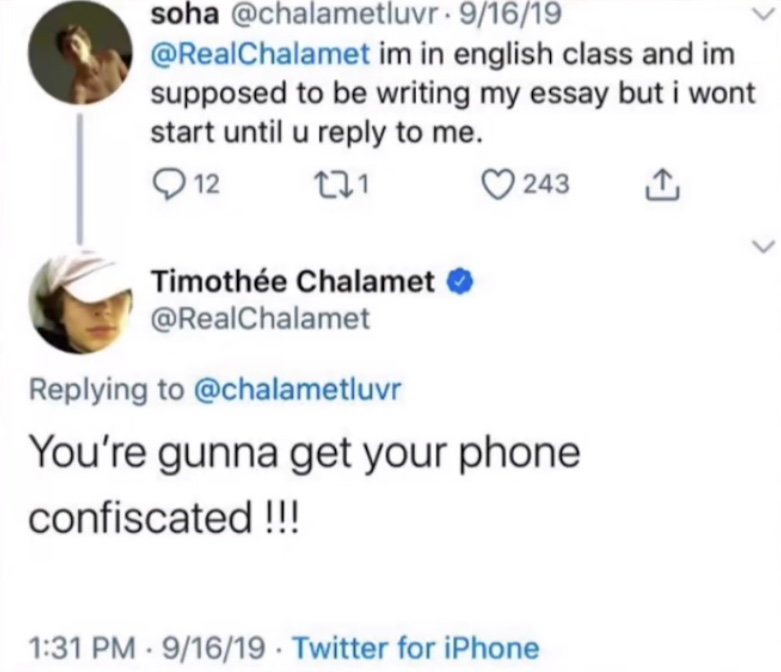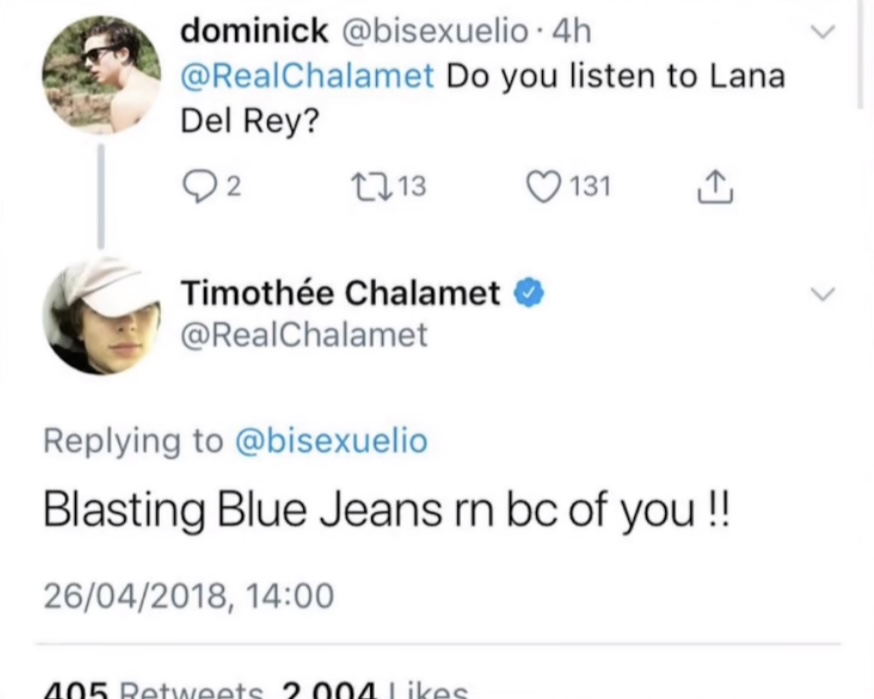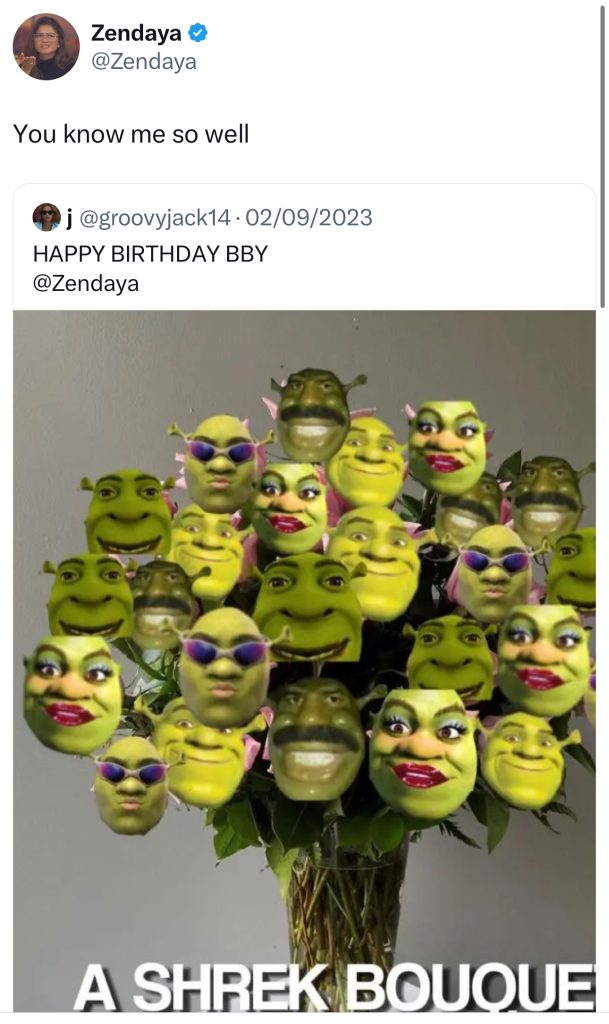Zendaya and Timoth├ęe Chalamet are two of the biggest working actors we have today. They have starred in incredible projects and have gained a large following because of it. Their online presence is quite professional, and their social media is mostly used to promote their upcoming projects. However, it didnÔÇÖt used to always be like this.
They are quite popular for their online presence earlier on in their careers. They both used to be incredibly active on X (formerly known as Twitter) and Instagram. They would engage a lot with their fans, whether it be through liking posts, commenting, or exchanging messages. This led to audiences and fans identifying with the actors more due to their authenticity.
A lot of theorists would agree that identity is not something that is fixed but rather something that changes constantly based on situations individuals are in. This is evident in both Zendaya and Timoth├ęeÔÇÖs online presence.
As previously mentioned, their social media accounts are mostly used to promote their work and donÔÇÖt really show their personality or identity like they did before. They are also less active, engage less with fans, and have both unfollowed everyone that they previously followed. This is a great example of what the theorist Goffman has said about people constantly trying to set themselves in the best light that is favourable to them.
In GoffmanÔÇÖs 1959 book, ÔÇśThe Presentation of Self in Everyday LifeÔÇÖ, he describes the world as a stage and the people in it as performers. This idea can be applied to celebrities, and in this case, celebrities are performers, and social media is their stage. This is due to the fact that they can portray themselves however they want, which ties into the overall idea of impression management. Impression management is known as using certain words or acting a certain way depending on the situation and the audience thatÔÇÖs being interacted with to give the best impression. It can be used to describe Zendaya and Timoth├ęe specifically because they once went from constantly engaging with fans to being strictly professional in order to give off the best impression to everyone. This also suggests that celebrities and public figures can be more selective with what they choose to put out there into the world, which means that they can hide more of their personal lives and therefore influence how they are perceived by others. This is known as ÔÇśbackstageÔÇÖ, which is a concept in the theory of impression management.
So seeing how Zendaya and Timoth├ęe act online now compared to how they did in the past is evidence of how identity is in fact complicated to define because of how itÔÇÖs constantly changing and is being used for different reasons. All of this can also be used to backup theorists claims of identity being fluid and not fixed.












Hi Victoria! This is a really interesting take on construction of identity in the digital world. Using examples of Timothee and Zendaya makes this blog super relevant and current as they are both in the media a lot at the moment. It is interesting how celebrities have tried to portray themselves as more professional online, it seems as though they use their instagrams the way most people would use Linkedin, for example.
The idea of them also having ‘backstage’ personalities is interesting as it makes them more out of reach, and therefore making them seem more untouchable makes them more A list. Goffman’s idea of life being a performance can clearly be even more applied to those in the public eye as they know they are constantly being scrutinised by the press and their fans. Really enjoyed reading your blog!!
Really love your idea of the choice of going with and mentioning celebrities with the use of social media. It’s very well descriptive and very informed about social media and how not only us but also well-known celebrities are using social media, such as, in this case, Zendaya. Using examples of tweets posted via celebrities as evidence to back up your point is just well put.
Although your blog post is well put, the format and layout could have been changed, such as mentioning media theories (e.g. Goffman’s 1959 book, the presentation of self in everyday life, and how you talk about it after you mention the use of social media and Zendaya. While it could’ve been used as more of an introduction or a starting point to your blog to gain more of a sighful see of the topic the fact that there are a lot of Twitter screenshots of tweets of celebrities, which is a bit overwhelming to see and sometimes people say, ‘less is more.’
Overall, it’s a good blog to read, but it could use some work to improve it to make it a much more entertaining sight of the use of social media.